Product Hub September 02, 2015
How To Print for Retail
Well-Known retailers up-and-coming clothing lines have a need for screen printing .To satisfy discerning client base, decoration shops must be able to do it all
Well-known retailers and up-and-coming clothing lines have a need for screen printing.To satisfy this discerning client base,decoration shops must be able to do it all.
Take a look in the windows of any popular apparel retailer at the local mall (Forever 21, American Eagle Outfitters, Spencer’s, PacSun and many others). Browse the racks of big box stores like Walmart and Target. Just about everywhere, you’ll spot screen-printed designs among the season’s featured garment styles.On a smaller scale, up-and-coming music groups or designers starting a clothing line have a need for screen printing as well.
So how does a print shop eventually see its work featured in such high-visibility retail applications? To find out, we talked to shops with experience printing for prominent clients with clothing lines and high-end retail markets. Their advice: partnering with these customers is much more than simply being able to offer a slew of special print effects. Shops must also be nimble and attend to every detail of a specific order while deftly handling a variety of jobs at one time. Is your shop up to the challenge?
Climbing the Ladder
“There’s no magic formula to break into retail,” says Tom Davenport, president of Motion Textile (asi/72662). “You can’t say, ‘Hey, I want to print for you even though I have no experience.’ You might start with a small clothing line that gets picked up by a mid-tier retailer, and then you continue printing for them. You get experience and have something to add to your portfolio.”
When shops are looking to break into premium retail printing, independent clothing lines can be one of the first rungs on the ladder. Oftentimes, screen printers work with clients who have an idea for a clothing line and help them design their items for e-commerce stores. “Clothing lines and retail really go hand-in-hand,” says Lucas Guariglia, owner of Rowboat Creative (asi/313715). “We consider e-commerce a form of retail. First the clothing line is featured in an e-commerce store, and then sometimes they’re noticed and picked up by more high-profile retail, and they can eventually end up in higher-end stores.”
The demand for detail grows exponentially when designs are created for a retail setting. “The customer will dictate exactly how they want everything,” says Davenport, “from the design, to the packaging, to how it’s shipped.” Rich Santo, president of Culture Studio (asi/700559), explains that because many of the items are headed directly to shelves, racks and window displays, clients require attention to even the minutest details. “The consumer making that purchase demands the decoration be perfect,” he adds.
Every aspect of the order, from garment style, to the design of the print, to packaging and delivery, must be discussed and agreed upon by the printer and the client. All of these aspects, says Guariglia, are determined by the target application and the audience. “We consult with the customer, ask about objectives and figure out how we can meet them,” he explains. “If they’re new, like those customers with their first clothing lines, there’s some educating that has to be done.
Oftentimes they don’t know what their request actually entails.” To help the consultation process along, the Rowboat Creative showroom displays examples of what they offer, from alternative inks to extra add-ons, such as hang tags, poly bags and more, that are added to the fulfillment process.
But oftentimes, once the costs are laid out, new customers scale back their initial idea. This is opposed to well-established retail brands, says Guariglia, which “usually have design teams who know what they’re doing and come to us with exactly what they want. There’s not as much consultation.”
The look of retail printed garments.
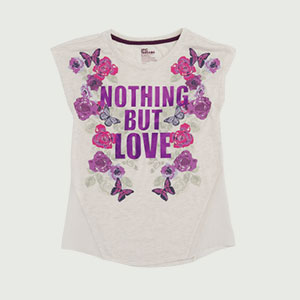
Tone-on-tone and fluorescent ink is accented with purple metallic transfer foil from Epic Threads.
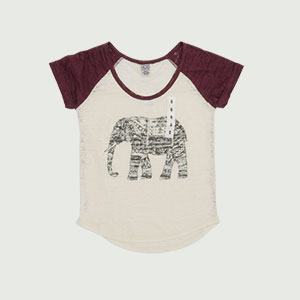
Ladies’ burnout tee with subtle one-color screen print from Zumiez.

Aeropostale sells this men’s tee from Free State with two-color print and a light hand with screen-printed neck label.
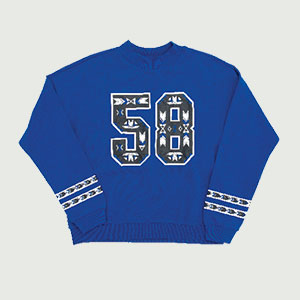
Crewneck sweatshirt from H&M’s Divided basics line has screen printing on the front and cuffs accented with subtle embroidery and beading.
Less is More
Because budgets and client goals range widely between clothing lines and high-end retail shops, design and quantity requests run the gamut. It all depends on the size of the outlet, how much product they sell and the number of locations, says Guariglia. “High-end retail clients often ask for low quantities of a few specific designs to drive demand,” he explains. “Meanwhile, tourist gear clients, for example, usually want a wide variety of more universal designs that can be used in different store locations. With a more generalized demographic, they like to play it safe. They don’t want to make it too wild with alternative techniques.”
But Guariglia adds that retail is “playing it safe as well. Overall, things are largely reverting back to a more minimalist style, and that has shops cheering because production is easier and faster.” Davenport sees the same restrained style coming back to print shops, which means special effects, such as flocking, foil, puff, glitter, gloss, cracking and others, aren’t in as high demand as they once were. “We’ve found that technique printing has really died down over the past five years,” he explains. “Now, clients want basic stuff, like discharge, oversized prints and custom placements, done really well. They really want a great design and quality printing. In advertising specialty orders, we’re seeing the same trend. While the ability to offer different techniques is a nice tool for the sales rep to show potential clients, it often doesn’t come to fruition.”
Justin Moore, president of Barrel Maker Printing (asi/701871), has seen sustained demand for his shop’s simulated process waterbase and discharge prints as opposed to other special effects, though some customers still want to add glow and metallic inks. “You can also create nice-looking prints by working in higher-end clear gloss bases, or by adjusting your pigment loads,” he explains.
Part of this move back to an understated print style, says Davenport, is not only the cost of alternative print techniques, but also the wide variety of blank apparel now available. “The options are much more robust than just a few years ago,” he explains. “The garment is now part of the design, so if you have a very simple print plus a great garment, that’s solid.” But it also means screen printers must hone their skills in printing on different fabric constructions. For example, tri-blend fabrics – a combination of polyester, cotton and rayon – have become popular over the last couple years for their super-soft hand. But it’s also notoriously challenging to screen print. “A lot of printers do it badly,” Davenport says, “so guiding customers with the design and then printing successfully on it is a process all its own.”
“Retail evokes a higher emphasis on quality, but I don’t agree with that mentality. Both ad specialty and retail should be given the highest attention to detail.”
Justin Moore, Barrel Maker Printing (asi/701871)
The diversity of garment styles now available means shops can emphasize different apparel options over wild designs that put pressure on shop production and workflow. “Nowadays, the apparel is part of the total design,” says Guariglia. “If it’s not a comfortable shirt, people won’t wear it. Customers notice different blends, and they’re approaching us with specific requests. You need to find the best garment for the customer before deciding what’s printed on it.”
One-Stop Shop
In addition to quality printing, retail brands (and even clothing lines, depending on their budget) frequently require additional services to complete an order. Most of the time, they include folding, hang tags, size strips, inside tagging, polybags and SKU stickers on all garments, says Santo, who adds that the printer “must understand every aspect of the total package to be delivered.”
While putting forth quality prints is understandably the main focus for screen-printing shops, those looking to establish relationships with retail clients must be able to offer any required add-ons. “You want the finished product to be something you can put forward proudly,” Guariglia says. “These small things distinguish the items. It’s amazing how packaging can persuade people. Custom tagging is a big one, because many brands still have scratchy tags. It’s important to make it something comfortable, or people won’t wear it.”
Davenport adds barcoding, custom boxes and tape to the list of popular extras that clients often request, as well as different decoration methods, particularly embroidery and heat transfer. “We might be asked to print all the garments for a retailer’s entire season,” he explains, “and a few of them may require a touch of embroidery.”
No matter what extra add-ons are requested, planning ahead is key: the correct number of pieces must be ordered and scheduled to arrive at the shop before or at the same time as the apparel. “If an order requires a special hang tag or box, they need to be waiting for the garments in the fulfillment department,” says Santo. “We have very strict guidelines for every part of the order, and having a cross-trained staff helps move the orders along quickly.”
While these special services come with a price, it’s usually not difficult to convince clients, particularly those ordering items destined for high-profile displays, of the importance in assembling a quality order on which they can proudly put their name. But a client’s willingness to spend big bucks on all the bells and whistles doesn’t mean a shop can afford to take their business for granted. Rowboat Creative, for one, is committed to being honest about costs, and clearly lays out any upcharges incurred. “We leave it up to the client to decide to pay a premium,” Guariglia says. “We don’t want to gouge them, but we also protect the house when production is demanding by asking for a little more. We’re very transparent and have no hidden fees. We don’t want it to be like buying a plane ticket.” Once the order has been assembled, shipment can come with its own requirements as well; Barrel Maker’s Moore cites special fulfillment to multiple locations as one example.
Given the variety of clients and their many needs, turnaround times vary widely and can be challenging to predict. At Rowboat, “the demand for high-volume orders has skyrocketed recently,” says Guariglia, but turnaround times have remained on average between seven to 10 business days.” For Culture Studio, brands with items going into stores will give substantial time to complete the order, though rush orders are not out of the realm of possibility. Adds Davenport for Motion Textile, “the turnaround time totally depends on the client. I can’t even put a number on it. It’s completely open. We see absolutely everything.”
Striking a Balance
The real balancing act, says Guariglia, is keeping the production floor running smoothly while different jobs continue to come in at breakneck speed. “You have to time it right, or the floor starts to back up,” he explains. “Facility to facility, it depends on what you can handle. You can make lots of money on one order, but if you’re losing core clients because you’re spending so much time on it, that’s not good. You have to meet drop-dead deadlines, or the client will find someone who can.”
All The Details
Printing for retail involves everything from custom cut-and-sew knowledge to a mastery of packaging and fine details. Here are two examples of printing for retail in action.
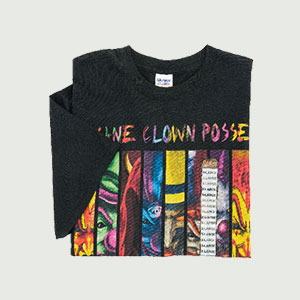
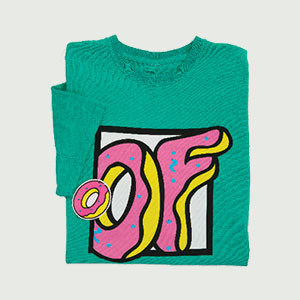
Culture StudioBeing a preferred partner for clothing line and retail clients means shops must also offer custom add-ons to round out the fulfillment process. Culture Studio (asi/700559; circle 99 on Free Info Card) recently designed these two shirts with plastisol prints, one for Insane Clown Posse for Spencer’s retail store, and the other for hip-hop group Odd Future. The Clown Posse tee arrived neatly folded in a polybag, and features a size strip on the front. Meanwhile, the Odd Future tee, also folded in a polybag, has a custom screen-printed tag, hangtag and SKU number.
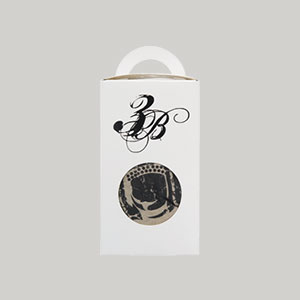
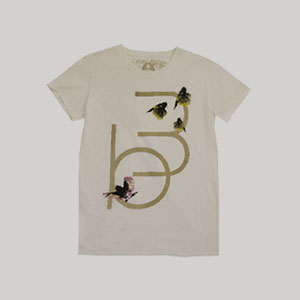

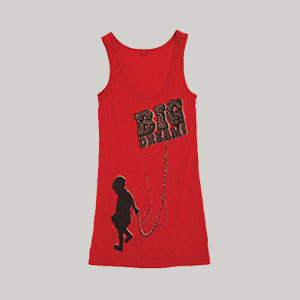
Rowboat Creative
Rowboat Creative (asi/313715; circle 100 on Free Info Card) has designed several tees for Three Buddha, a custom clothing line sold both nationally and internationally. “We facilitate the cut-and-sew portions of the items, as well as the printing and embroidery on the cut fabric pieces prior to assembly,” says owner Lucas Guariglia. “We printed the custom box with water-based acrylic ink in our flatstock department, where we do a considerable amount of custom packaging.” The tees were printed with Matsui waterbase ink.
Meanwhile, the company’s team created the Big Dreams tank top with waterbase discharge for a retail-ready line slated to be sold in Chicago.
So is it possible for a shop to balance work for retail and clothing lines with orders from advertising specialty clients? Absolutely, printers say, and they strive to do so. Culture Studio, for example, combines the two kinds of orders as much as possible. “While clothing lines and retail usually work in seasons and come with high spikes and deep lows in production,” says Santo, “the advertising specialty market is usually very consistent. If you schedule it correctly, orders can flow through the shop with few hiccups.” Indeed, fulfilling orders for both types of clients can protect a shop’s bottom line and help it weather market changes. “If retail takes a major hit, your shop can suffer, so it’s good to do both,” says Davenport. “It’s just a matter of knowing their specific needs.”
To do it right, a shop needs to fire on all cylinders – capable staff, well-laid-out facility and all the pertinent equipment and supplies. “Balance is all about dividing and conquering,” says Guariglia. “Core production has to be seamless from one step to the next, and you have to be set up for that.” He adds that with a solid staff, both retail and ad specialty orders can be fulfilled in a timely fashion. “We’re not cutting off a whole side of the industry, because you never know what’s going to happen or what something will turn into,” he explains. “One client could turn into a Super Bowl contract! Another might be a new clothing line that’s just starting out, not really moving things, and then it gets picked up by Hollister or Gap and you go along with them. It’s best to keep your options open.”
Moore says his shop does both retail and ad specialty orders for one simple reason: they don’t differentiate between them. “‘Retail’ might evoke a higher emphasis on quality, but I don’t agree with that mentality,” he explains. “Both ad specialty and retail should be given respect and the highest attention to detail. Screen printing is truly a craft to take pride in no matter where the final product is headed. We don’t discriminate. Our goal is always the same: to create the most vibrant and true-to-mockup print we can with the best feel.”
Sara Lavenduski is an assistant editor for Wearables. Contact her at slavenduski@asicentral.com and follow her on Twitter at @SaraLav_ASI.

Product Hub
Find the latest in quality products, must-know trends and fresh ideas for upcoming end-buyer campaigns.
